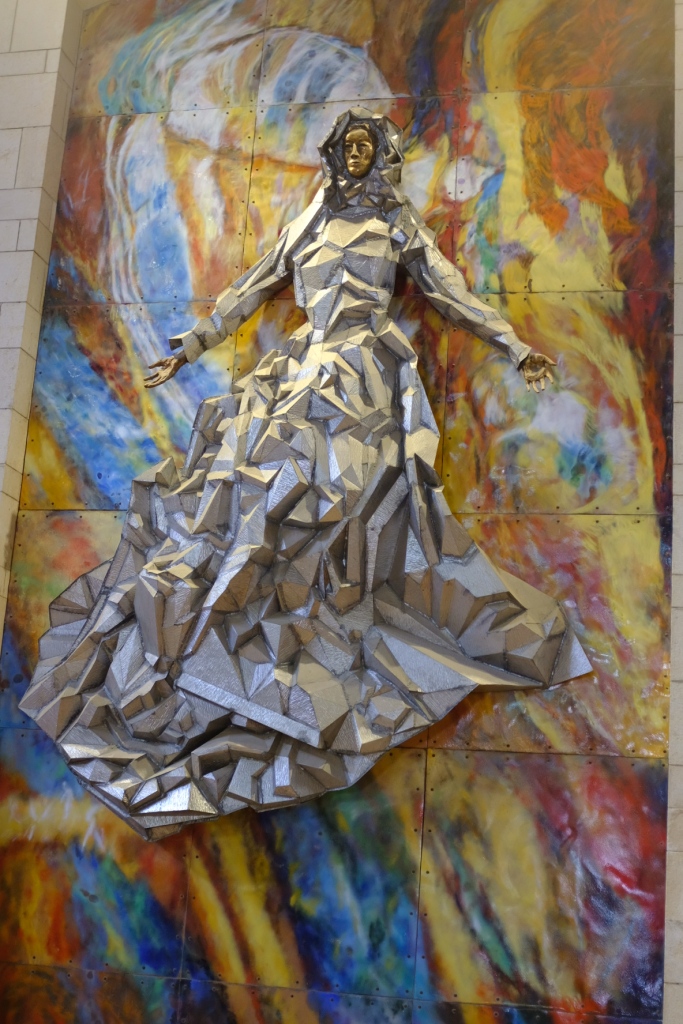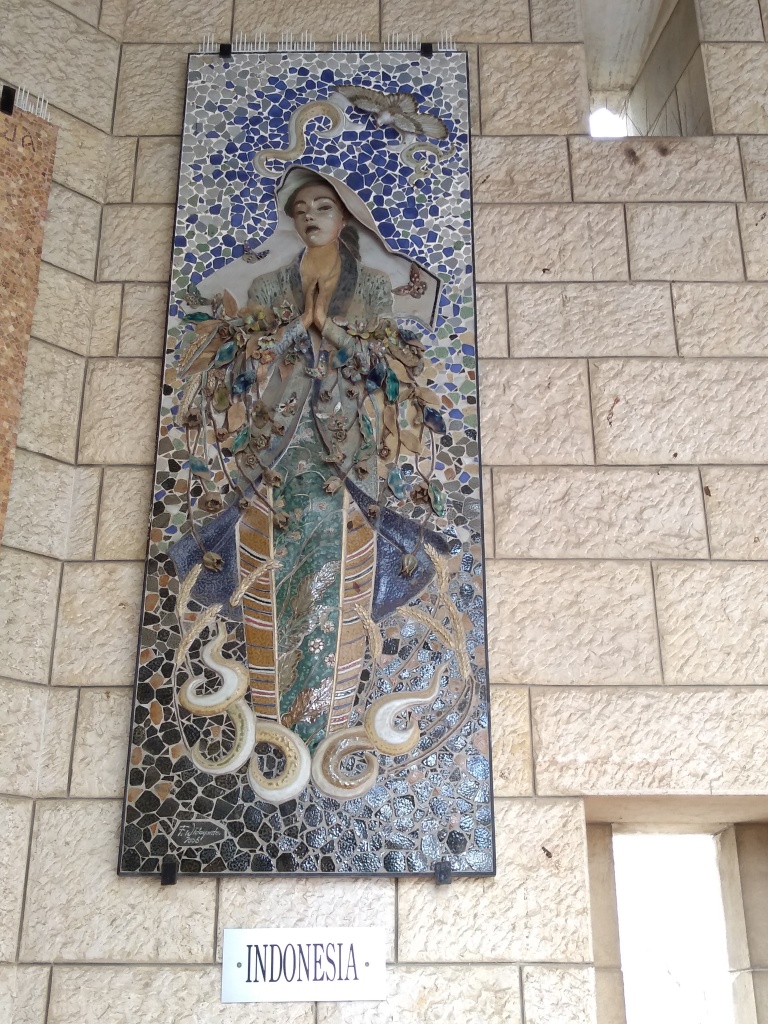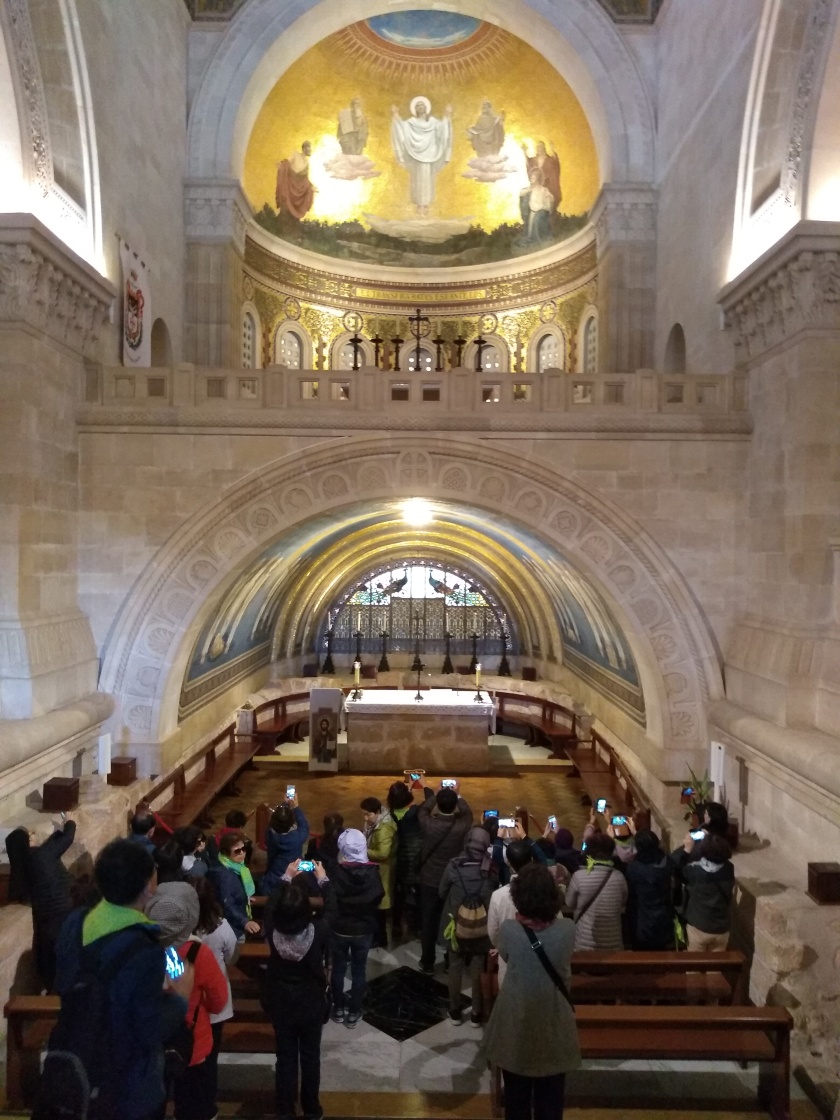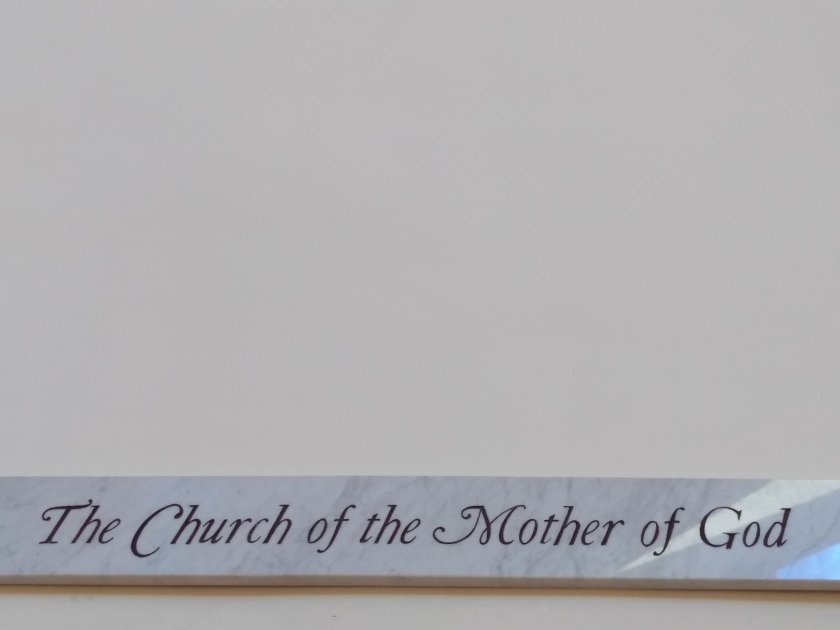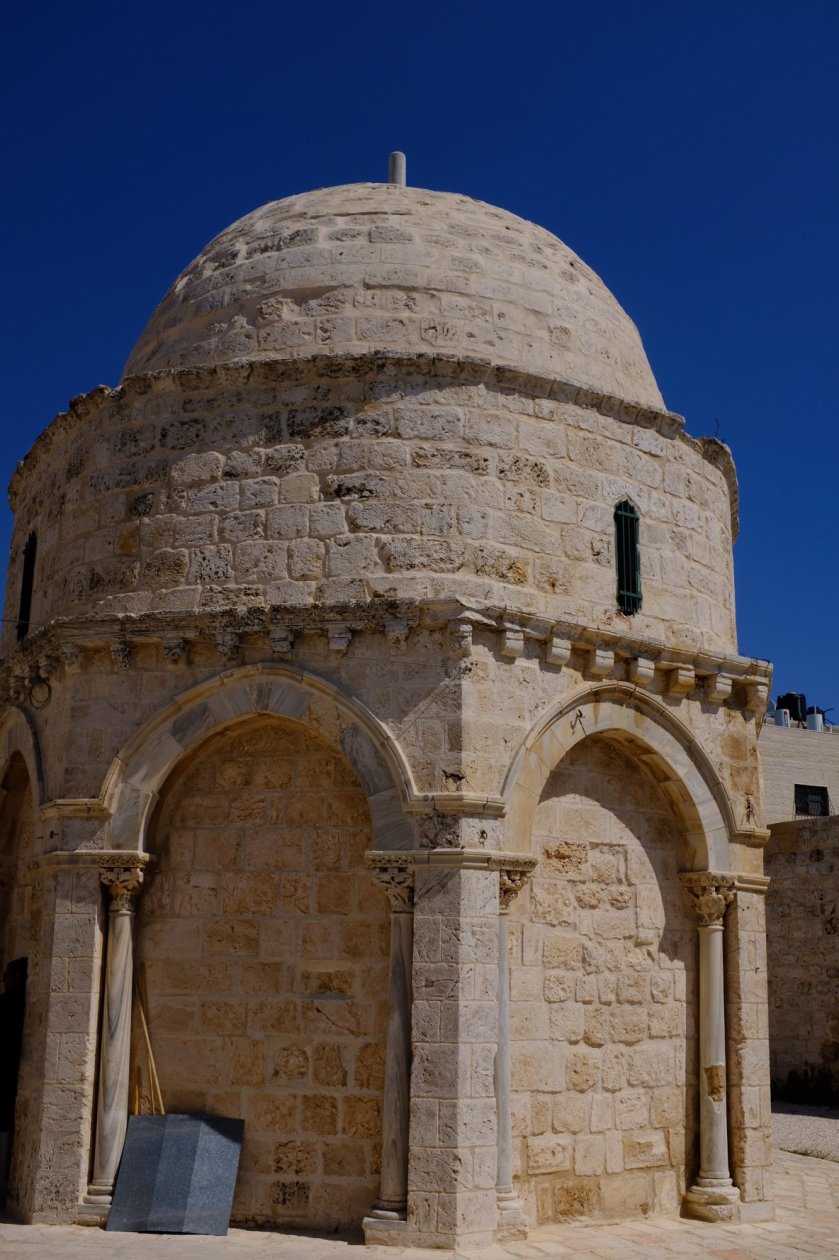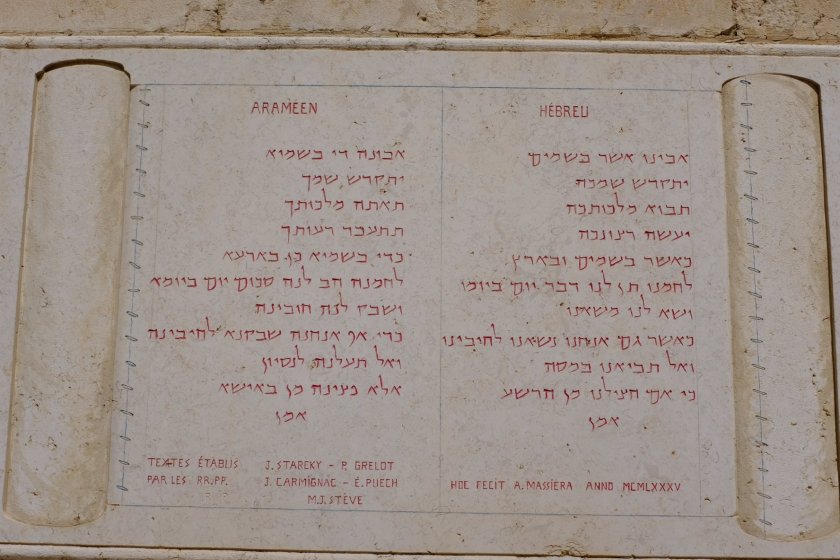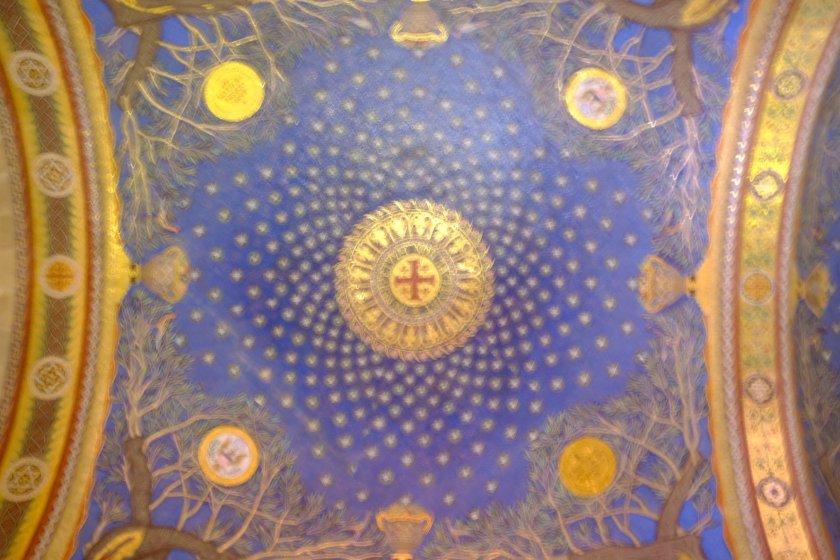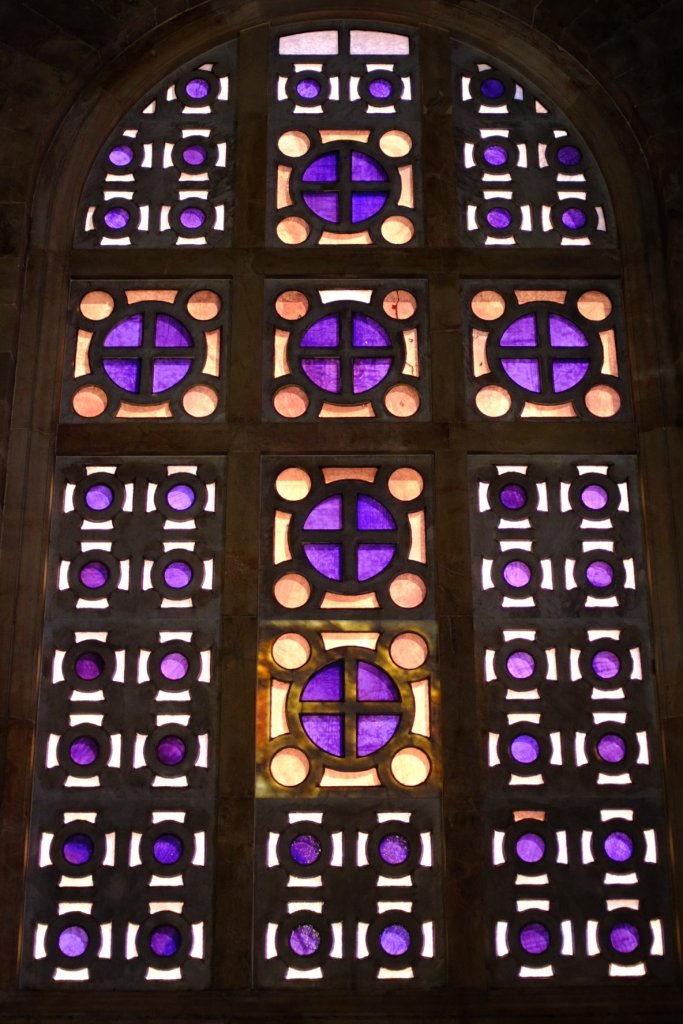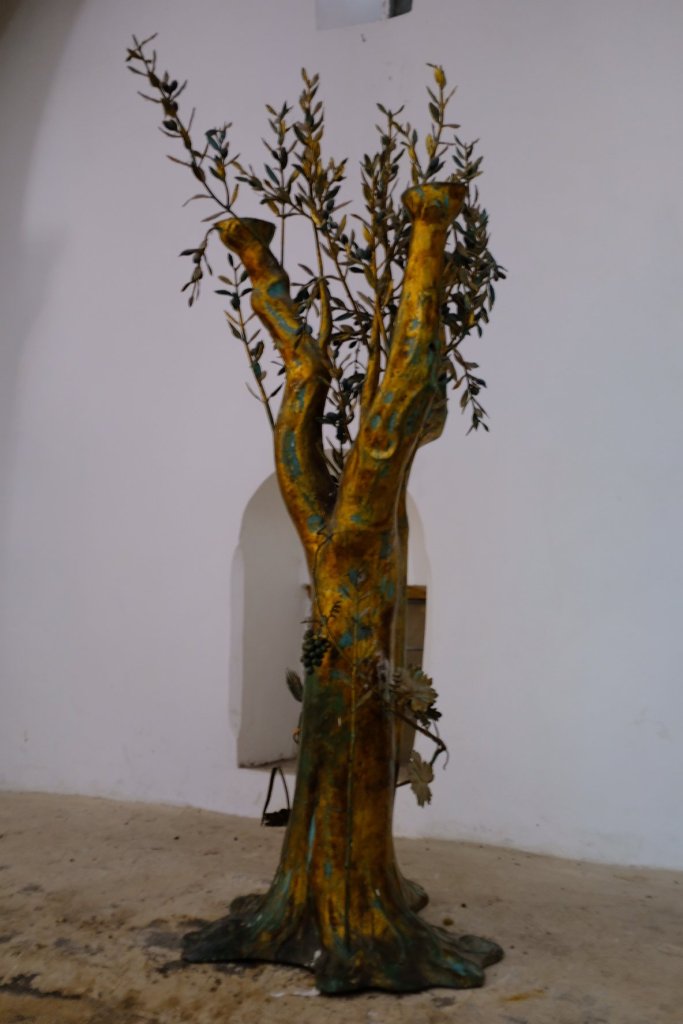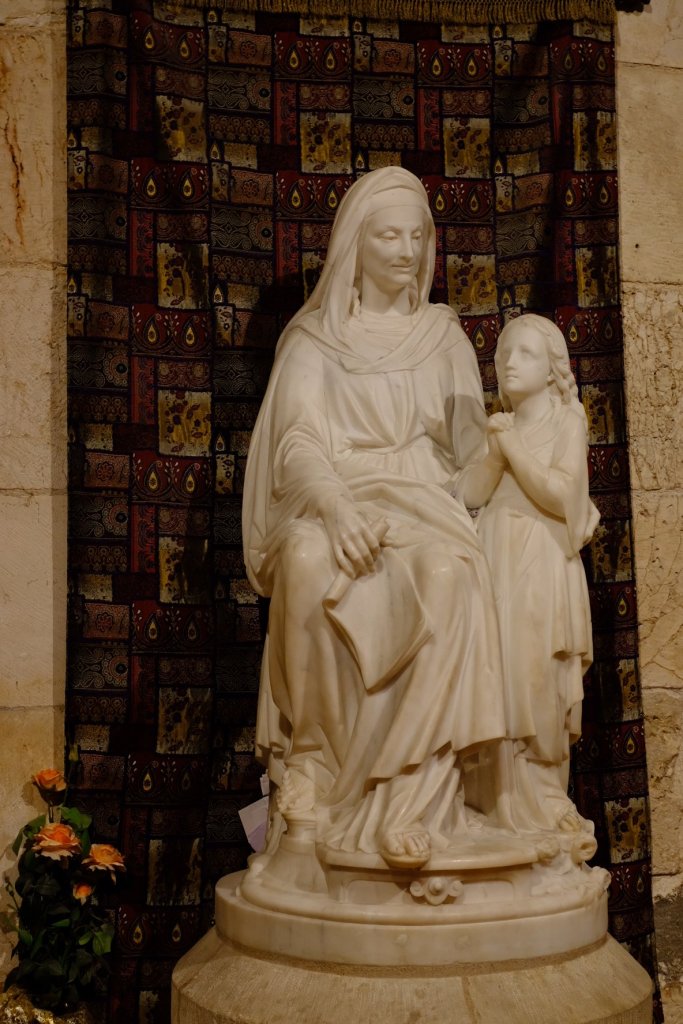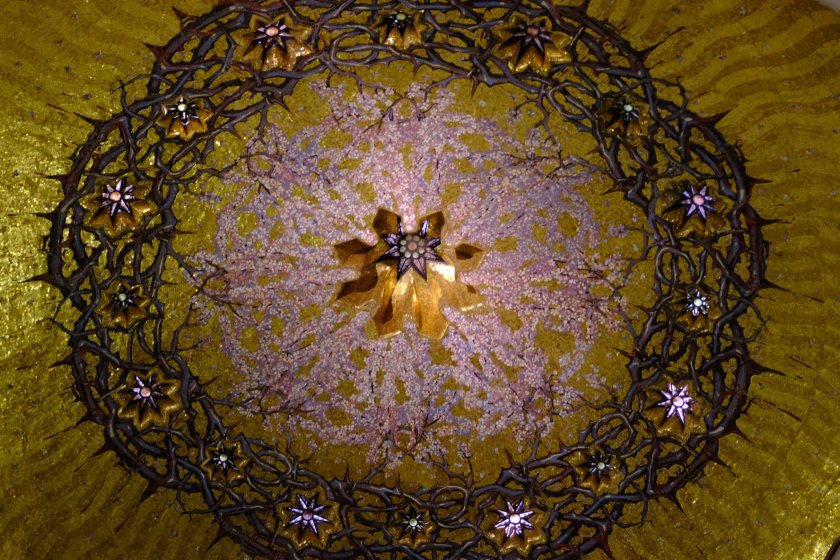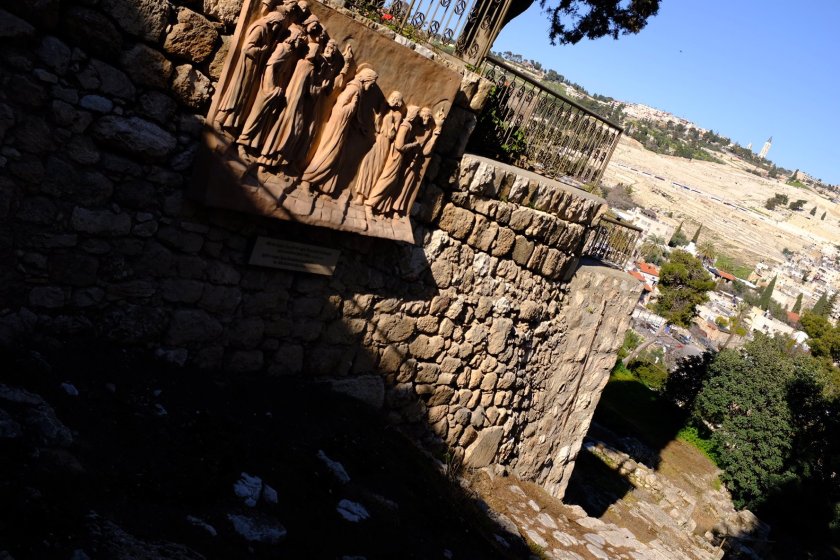Day 3 of our organized tour began in Nazareth. Like all organized tours, Day 1 & 2 is travel day, especially when it involves international flights. We were pleasantly reminded of this as we had made our own travel arrangements and arrived the day the tour was supposed to start based on the itinerary, but it was a day earlier than the rest of the tour group. This serendipitous situation allowed us to spend a day exploring Tel Aviv. Day 2 afternoon/evening was meeting up with the rest of the group at the airport and commuting to Nazareth for the night. As you can tell, this is probably our first tour package in a while (I vaguely recalled we may have taken one 35 years ago). We prefer to travel independently.
Nazareth is where we will spend our first three nights of our Holy Land Pilgrimage tour.
For the modern day pilgrims, there are several ‘risks’ that we must contend with. The first risk is that the crowds and some of their behaviors will likely influence one, as if one was a twig being tumbled along by a bubbling creek. There’s a rush to photograph the attraction. There’s a lot of posing by statues and selfies. There’s the invariable spill over chatter from tour leaders briefing nearby groups (we ourselves are guilty of that). Today’s smartphone camera is yesterday’s grafitti spray can.
The second risk is forgetting to don on the pilgrim’s glasses and hat. Good songs have a catchy beat and tune. Great songs marry meaningful words to the music. Likewise, a Pilgrimage experience marry what we ‘perceive’ with what we feel/sense and how that moves our inner self
My tips for the (Christian) Pilgrim are three fold:
1. Reflect and contemplate the religious significant of the location you are at. Give free reign to your imagination, heart and spirit.
2. Pray from within. Let that location’s significance move your heart. Give birth to that special intention.
3. Carry inside you a special memory-seed of the moments you spent there. It will germinate and flower in our life. In God’s time.
Our first visit was the Mount of Beatitudes (and where we caught our first sight of the Galilee Sea as we stood on terra firma). The church was built over the spot/area where the sermon was delivered. Having the Bible available on my smartphone allowed me to refer to the relevant scripture verses. It’s a lovely spot that one can easily spend an hour and immerse oneself. Imagine hearing Jesus preach those verses and just reflecting where and how these teachings apply to one’s life. My special intention and memory-seed was a specific beatitude that I desired to cultivate. For some, the message will be different. Unfortunately, as in all organized tours, the schedule dictates our ability to linger as our soul would like to.
The Church of the Multiplication of Loaves & Fishes was built over the rock where this miracle was performed. It really shouldn’t surprise any of us that we have all been multiplying our talents as we grew up and earned a living. The physical miracle should not be discounted. Perhaps the question to ourselves is where the largesse of our efforts have landed. Again, my specific prayer intention and memory-seed centered on this multiplication.
There is much symbolism that we might have easily overlooked if our guide, George had not mentioned. This church has a mosaic representation of four bread loaves and two fishes. But scripture refers to five loaves and two fishes. Did the artist make a mistake? No, he/she did not. The fifth loaf is represented by the hosts offered during Eucharist.
Magdala was a highlight. It’s an area found serendipitously as someone was building a resort. They found the runs of the oldest synagogue excavated in Galilee, one of seven first century synagogues. They found an intact stone base where the Torah would rest on. On the sides and top of the stone are intricate religious carvings.
Mary Magdalene came from this village, and Jesus very likely preached in the synagogue as it was located along the Via Maris, a major thoroughfare. Visualizing Jesus in the synagogue preaching and reading some scripture would be a powerful experience.
We celebrated Mass at a modern chapel with an altar designed like a fishing boat. This chapel was surrounded by a water moat, and the reflecting sunshine truly added special effects. I love the basement chapel with its original flooring and the painting. Below is just the central portion of said painting (only feet are depicted).

Faith heals.
Perhaps through Faith, one should seek self healing first, in all aspects, realized, hidden and spiritual. This is not selfish but recognition that one’s brokenness can only be truly healed by God.
I am excited as I see the construction taking place here as I can visualize how this center can lead to many fruits.
The Church of the Primacy of St. Peter on the shores of the Sea of Galilee was where Jesus prepared breakfast for the disciples after His Resurrection. The Church altar is built over the rocks where the fire was. It’s here where Jesus asks Peter three times whether Peter loves Jesus. Has God asked me three times or more on some specific Will of His?
We ended a packed day with a boat ride on the Sea of Galilee. Since the River Jordan flows through the Sea of Galilee onto the Dead Sea where it ends, our guide astutely noted the Sea of Galilee would be there widest part of the River.
The Sea had a thin layer of brownish algae one tree pollen. It was extremely calm. During one stage, birds that were floating on the Sea suddenly flew around our boat, circling our moving boat multiple times. I had a surreal sensation that we were being greeted on the Sea.
The boat crew played some Israeli music and let us in a group dance. Oolah lah.
Thus, the day ended. Mind and spirit renewed.
